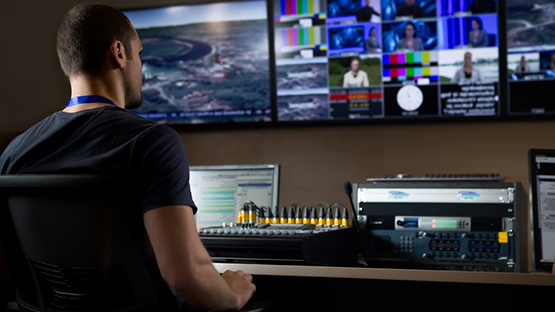Broadcasting has evolved significantly over the years, thanks to advancements in technology. Traditional broadcasting tools have long been the industry standard, but with the introduction of Nvidia Broadcast, a new player has entered the scene.
Nvidia Broadcast is a powerful suite of AI-powered tools designed to enhance the quality of live streams, video conferences, and recordings.
In this article, we will compare Nvidia Broadcast with traditional broadcasting tools, exploring their features and performance to determine which one comes out on top.
1. The Rise of Nvidia Broadcast
Nvidia Broadcast represents a revolution in broadcasting technology. Leveraging the power of artificial intelligence, it offers a range of features that were previously only available to professional broadcasters.
With Nvidia’s RTX graphics cards, users can now access real-time AI effects such as noise reduction, virtual background, and auto frame. These features have made Nvidia Broadcast a game-changer in the industry, providing users with the ability to produce high-quality streams and recordings from the comfort of their own homes or offices.
2. Traditional Broadcasting Tools: A Brief Overview
Before the emergence of Nvidia Broadcast, traditional broadcasting tools were the go-to solution for professional broadcasters. These tools include hardware encoders, switchers, and video mixers, which are used to capture, process, and distribute audio and video content.
They often require a dedicated setup, including professional cameras, microphones, and other equipment. While traditional broadcasting tools offer a high level of control and customization, they can be complex to set up and require technical expertise.
3. Features of Nvidia Broadcast
Nvidia Broadcast offers an impressive array of features that cater to the needs of content creators, streamers, and video conferencing users. Here are some of the key features:
- Noise Reduction
One of the standout features of Nvidia Broadcast is its advanced noise reduction capabilities. By leveraging AI algorithms, it can effectively filter out background noise, resulting in clearer and more professional audio. This is particularly useful for streamers and video conferencing users who want to eliminate distractions and improve the overall quality of their content.
- Virtual Background
With Nvidia Broadcast, users can easily replace their background with a virtual one. This feature is particularly handy for streamers who want to create a more immersive experience for their viewers. Whether it’s a gaming-inspired backdrop or a professional-looking office setting, the virtual background feature adds a touch of creativity to any broadcast.
- Auto Frame
Nvidia Broadcast’s auto frame feature is designed to keep the focus on the user, even when they move around. By leveraging AI algorithms, it can track the user’s movements and adjust the frame accordingly. This is especially useful for streamers who want to maintain a professional look without constantly adjusting their camera setup.
- Audio Effects
Nvidia Broadcast offers a range of audio effects that can enhance the overall audio quality of a stream or recording. These effects include voice modulation, reverb, and equalization. With these tools, users can fine-tune their audio to match the tone and style of their content.
4. Performance Comparison
Now that we have explored the features of Nvidia Broadcast, let’s compare its performance with traditional broadcasting tools. In terms of ease of use, Nvidia Broadcast takes the lead. Its intuitive interface and user-friendly controls make it accessible to users of all skill levels. On the other hand, traditional broadcasting tools can be complex to set up and require technical expertise.
When it comes to audio and video quality, Nvidia Broadcast offers impressive results. Its AI-powered noise reduction and auto frame features ensure clear audio and a well-framed video. Traditional broadcasting tools, while offering a high level of control, may require additional equipment and setup to achieve similar results.
In terms of customization and flexibility, traditional broadcasting tools have the upper hand. These tools provide a wide range of options for users to fine-tune their audio and video settings. However, this level of control comes at the cost of complexity and a steeper learning curve.
Whether you’re a content creator, streamer, or video conferencing user, Nvidia Broadcast is a versatile and powerful solution that can elevate the quality of your broadcasts. With its intuitive interface and advanced features, it has the potential to redefine the way we approach broadcasting


